- Administrator
- Albums and Singles
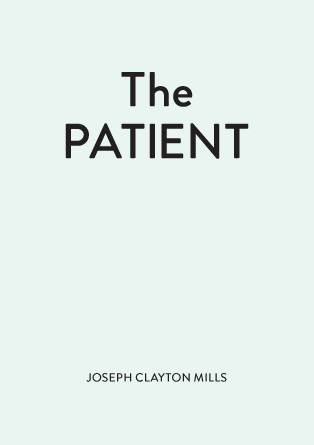 Franz Kafka died of starvation on June 3rd, 1924, his throat cinched by laryngeal tuberculosis. The intravenous delivery of food to sick patients wouldn’t be invented for another 35 years and the swelling in Kafka’s throat caused by the infection made swallowing even water difficult. Forbidden from speaking by his doctor at the sanatorium in Kierling, Austria, Kafka would often communicate with his friends and visitors by writing small notes on scraps of paper. Some such scraps were less notes and more fragments or disconnected ideas, phrases impossible to understand without context. It’s something Max Brod, Kafka’s friend and literary executor, recalls in the opening pages of the booklet that accompanies Joseph Clayton Mills’s The Patient. "Usually these notes were mere hints; his friends guessed the rest," he writes. Mills, accompanied by Olivia Block, Noé Cuéllar (Coppice), Steven Hess (Pan•American, Haptic, Innode), and Jason Stein take a shot at interpreting those fragments on this record, using Mills’s textual score to trace a line around Kafka’s final abraded thoughts.
Franz Kafka died of starvation on June 3rd, 1924, his throat cinched by laryngeal tuberculosis. The intravenous delivery of food to sick patients wouldn’t be invented for another 35 years and the swelling in Kafka’s throat caused by the infection made swallowing even water difficult. Forbidden from speaking by his doctor at the sanatorium in Kierling, Austria, Kafka would often communicate with his friends and visitors by writing small notes on scraps of paper. Some such scraps were less notes and more fragments or disconnected ideas, phrases impossible to understand without context. It’s something Max Brod, Kafka’s friend and literary executor, recalls in the opening pages of the booklet that accompanies Joseph Clayton Mills’s The Patient. "Usually these notes were mere hints; his friends guessed the rest," he writes. Mills, accompanied by Olivia Block, Noé Cuéllar (Coppice), Steven Hess (Pan•American, Haptic, Innode), and Jason Stein take a shot at interpreting those fragments on this record, using Mills’s textual score to trace a line around Kafka’s final abraded thoughts.
"The goal of this document is to suggest a vocabulary of actions," Mills writes. "It should in no way be seen as prescriptive or comprehensive, and the sequence of elements in this document should not be construed as implying a particular linear arrangement."
The 52-page score for The Patient bears only a passing resemblance to traditional musical scores. It contains a couple of references to particular notes in the Western 12-tone system, a few bar lines (one set displays both a treble and bass clef, but is otherwise blank), a few more very precise frequencies for sine wave generator, and even a reference to Wagner’s "Tristan chord," but the majority of it is filled with suggested actions of the sort written by George Brecht, La Monte Young, and Pauline Oliveros. They read, "play for longer than you think you should" and "image of water/droplets/dew" and "hushed breath/for unvoiced bellows/vocalist/friction on drumhead."
Together they are enough to constitute a composition, only the number of performers is unspecified and there are no instructions for how to string individual performances together. Participants have only Kafka’s quotes and Mills’s accompanying directions to guide them, along with a handful of photographs, drawings, medical diagrams, story excerpts, and historical summaries. None of it is prescriptive, but all of it sets a very particular tone, which is why, despite the score’s innate openness, this performance of The Patient sounds so compact, controlled, and potent. The instruments and sounds used to build it—piano, walkie-talkies, an accordion, bass clarinet, and even pages torn from a psalter—reflect Kafka’s illness brilliantly. They are harsh at times, and dry; distorted and lethargic; then atmospheric and feathered with granular noise. When they appear, words and phrases rise almost to intelligibility, then stop abruptly. They are threaded with interference, whispered breathlessly, and cut off as if by pain.
Still, every component is clearly expressed, even when it's truncated or mangled. Most passages are uncluttered and there are long spells of silence or near silence scattered throughout each of the piece’s seven mostly instrumental parts, but that only emphasizes the anguish in the sounds. It’s as if the audible distress of Kafka’s tuberculosis, latent in the notes he wrote, has been brought back to life. The wheezes, spasms, and sudden shocks of panic aren't just musical expressions, they're echoes of his condition that have traveled quietly through time for nearly 90 years.
But does it have to be so? Could The Patient ever be just an index for future performers, and so escape the gravity of Kafka’s life? What Mills put on the CD is a combination of improvised sounds inspired by his own text and a conscious arrangement of those sounds assembled after the fact. In this case, it’s almost impossible not to think of Kafka and A Hunger Artist or Before the Law because the text and the music is so filled with Kafka's voice, no matter how scattered and disembodied. Maybe we access Kafka’s private world by a secret musical door he never suspected, but that this world is put together from fragments and disconnected ideas constantly nags the mind. Whatever narrative can be spied in those scraps of paper, they’re a product of reflection, not the scraps themselves. The score sets a tone, but that tone could slip away like a breath if the performers wanted it to.
This particular performance pays homage to the score’s inspiration, but another might focus on the peonies, birds, or durations mentioned by Kafka in his notes. Yet another might obscure Kafka almost entirely and present a series of bodiless inflictions instead. That Kafka could disappear behind his own text is fitting. "Order and accidents seem equally impossible," he wrote. The Patient renders that paradox beautifully and asks its participants, whether listener or performer, to decide whether order or accident prevails.
samples:
 
Read More
- Administrator
- Albums and Singles
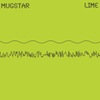 Following quickly on from last year’s …Sun, Broken…, Mugstar have extended the formula that blew me away on that previous album and have made an impossibly shimmering, psychedelic and, most importantly, rocking album. Lime may not rewrite the history of rock music but it does act like the fruit it is named after, it cuts through the senses in a most pleasant fashion.
Following quickly on from last year’s …Sun, Broken…, Mugstar have extended the formula that blew me away on that previous album and have made an impossibly shimmering, psychedelic and, most importantly, rocking album. Lime may not rewrite the history of rock music but it does act like the fruit it is named after, it cuts through the senses in a most pleasant fashion.
 
In a recent interview with Brainwashed, Jason Stoll revealed that a large portion of Lime came together at the last minute in the studio and that sense of immediacy and freshness comes through consistently throughout the album. If you told me this was a live recording of a band in their prime improvising while off their heads on the finest mind altering substances in some remarkable, esoteric location, I would believe you. The excitement, power and urgency of Mugstar’s playing shines through like a supernova; the music is that intangible, that ecstatic.
While the group play together with a tightness that would normally reflect too much polish on something best left with some grit and grain, Mugstar happily retain a looseness that tugs at the center of the balance of the pieces. On "Serra," a motorik rhythm pulses, sounding as solid as a castle (albeit one that seems to be charging along the autobahn). Yet throughout the length of the piece, the band chip away at the foundations and batter the walls with guitar and electric organ, causing the "Serra" to destabilize and teeter. This persistent threat of the whole thing coming down at any moment adds to the danger and thrill of Lime.
By the end of the album, I feel like I should have broken out a sweat as I am caught up in Mugstar’s sweeping music. Along with … Sun, Broken…, Lime represents some of the best pure rock music of the last ten years. As aforementioned, it is not revolutionary music in terms of innovation but the energy being blasted out by the band could easily spark a revolution of its own.
samples:
 
Read More
- Administrator
- Albums and Singles
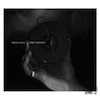
Heavy on percussion, the group have honed their rhythmic edge into a surgical knife. Stark, effective bass lines (sometimes just two notes) complete the rhythmic picture, adding a muscle to the rigid bones of the drumming. There is a vaguely ritualistic feeling to the music, for example on "Starts/Ends," where the percussion dances around itself to create a cathartic and engaging sound. Gavin Duffy’s immediate bass playing drags the music from this weirdly transcendent place back to the dance floor.
Without naming names, there are many artists who spend their time perfecting the ultimate post-punk album, drawing their inspiration from albums recorded 30 years ago and adding nothing more than a superficial glossiness to ideas that were once revolutionary but are now just a historical reference. So few artists try and break away from the past to create their own sound. While in the past I have heard the echoes of Sonic Youth, Throbbing Gristle and PIL in the music of Thread Pulls but on New Thoughts these influences have been pulverised and converted into Peter Maybury and Duffy’s own vision.
Duffy’s vocals are the other main ingredient to Thread Pulls unique sound. Sometimes adopting an odd but bewitching falsetto, not unlike a bleaker version of The Tiger Lillies’ Martyn Jacques, Duffy cannot be accused of being a boring vocalist. On "Sink and Swim," his voice rises up through the music sharply, demanding my attention. Elsewhere he delivers the mantric lyrics in a more controlled fashion such as on "Joujouka Reminder" where all the elements of Thread Pulls’ sound come together perfectly: the beat and word fusing into each other.
Throughout New Thoughts, Thread Pulls repeatedly up their game and make their previous releases pale in comparison. All the elements that I liked about their music (the rhythms and instrumentation in particular) have been streamlined and improved, the end result being a very lean and focused album. I have not seen them live in a while but I will be doing my best to catch them as soon as I can because they are obviously riding on the crest of a wave of inspiration.
samples:
 
Read More
- Administrator
- Albums and Singles
 Few artists can boast debut albums as stunning as this one, making its reissue after nearly three decades of unavailability something of a major event.  Originally recorded in 1983, the Soul Possession sessions assembled a murderer's row of talented collaborators such as Crass and UK dub heavyweight Adrian Sherwood to back young Annie Anxiety's animated and unseemly tales from the dark side.  Rightfully considered an underground classic, this album captures a rare "super group" in which everyone involved was at the top of their game, giving birth to something truly disturbing and visionary.
Few artists can boast debut albums as stunning as this one, making its reissue after nearly three decades of unavailability something of a major event.  Originally recorded in 1983, the Soul Possession sessions assembled a murderer's row of talented collaborators such as Crass and UK dub heavyweight Adrian Sherwood to back young Annie Anxiety's animated and unseemly tales from the dark side.  Rightfully considered an underground classic, this album captures a rare "super group" in which everyone involved was at the top of their game, giving birth to something truly disturbing and visionary.
Soul Possession has a somewhat improbable back-story, as the project was unknowingly set in motion when Annie decided to move from NYC to Germany following the dissolution of her band, Annie and the Asexuals (colorfully described in the liner notes as an "art-punk theater of pain").  Fate had other plans, and Annie wound up in London living with her new friends in Crass, an arrangement that resulted in the unexpectedly unpunk and tape-loop-informed Barbed Wire Halo 7", a collaboration with Penny Rimbaud that was issued on Crass Records in 1981.  Soon after, Annie met On-U Sound head Sherwood and the duo's shared love of dub resulted in this inventive and surprisingly dark collaboration.  Some mutual friends from the Crass collective were also pretty keen on dub at the time and gamely supplied much of the raw musical material.  In fact, Eve Libertine even takes lead vocals on one song, "Sad Shadows."
While a truly stellar outing for the most part, the album has two arguable flaws. The first is that Annie was occasionally a bit too conspicuous in betraying her punk/post-punk influences (such as with the anarcho-punk-esque lyrics in "Burnt Offerings"), which is unsurprising given her youth and the fact that she was living with Crass.  The second is that a cutting edge dub album recorded in 1983 necessarily sounds a little bit dated today.  Not as much as I'd expect, however– both Annie's vocals and Sherwood's production are outré and deranged enough to easily transcend such minor quirks though the slow, lurching drums and fretless bass sound are very much of their time.  In fact, it is pretty hard to tear my attention away from Annie's macabre and compelling narratives long enough to focus on much else.  Adrian, for his part, supplies more than enough studio-tweaked chaos and atmosphere to fill the gaps admirably.  Still, this is mostly Annie's show, and the album's highlights are those pieces where she pushes herself into singularly menacing, nightmarish territory.
The most disorienting of those songs is the uncomfortably lurid "Turkey Girl," where she sounds like a cross between Tom Waits and a depraved sex offender, dropping squirm-inducing lines like "you're my turkey fuck girl" and "I want to cut my cock on your pop top" as Sherwood unleashes bleeping and blooping electronics over a slinky bass line and horror movie piano.  Equally disturbed is the hitchhiker murder fantasy "Third Gear Kills," in which Annie ominously repeats "you're gonna die in the lay-by…tonight" and creepily describes stuffing a body in a trunk.  Remarkably, Bandez finds yet further frontiers in discomfort to explore with the absolutely stunning "Viet Not Mine, El Salvador Yours," employing a barrage of crazed-sounding overlapping voices, disjointed ramblings, moans, whimpers, and gasps over a sinisterly throbbing groove.
This album could not possibly be much further in tone from Annie's more recent work, though her infectious charisma remains a constant.  Bandez was not content here to merely indulge her dark side lyrically: she delivers her lines with a frightening conviction at times, sounding like someone teetering on the verge of a breakdown.  Even if Sherwood had played it relatively safe, Annie's damaged and threatening vocals could have easily carried the album, but he more than holds his own with his appropriately tense and hallucinatory soundscapes.  Despite all the echoing, gurgling, shimmering, and industrial textures, however, he still manages to maintain some rather propulsive grooves and unlikely hooks– a rather perverse accomplishment, as Annie's content renders the music singularly un-pop.  It all works beautifully, as I imagine this album would've been unlistenably raw and uncomfortable without such touches.  With them, Soul Possession is a deeply aberrant and uneasy near-masterpiece during its best moments.  This is still a very scary and harrowing album, of course, but it is not an inaccessible one.
Read More
- Matthew Jeanes
- Albums and Singles
 This digital-only EP released as an appetizer for the latest MBM full-length is a deliciously weird mixture of the sounds and ideas that make Meat Beat records so wonderful and unpredictable.
This digital-only EP released as an appetizer for the latest MBM full-length is a deliciously weird mixture of the sounds and ideas that make Meat Beat records so wonderful and unpredictable.
 
If Answers Come in Dreams is a tasty dish troubled only slightly by sameness, Totally Together is the perfect companion piece—a kind of sampler platter of the many directions that Meat Beat Manifesto can go at any moment.It represents an artist not tied down to any M.O. or tempo or method and that is, after all, one of the things that I've always found exciting about Meat Beat Manifesto records.
The EP's four tracks feature plenty of squelchy, acid-inspired bass and dub-infected effects called up from the familiar Jack Dangers menu, but each song distinguishes itself in a way that the tracks from Answers do not.Whether it's the vocal hook from "Totally Together," the maniacal Speak N Spell from "TRS2," or the traditional breakbeat in "Moving Body" that is nearly drowned in bass, each song has character.If you told me that "TRS2" was a MBM remix of Kraftwerk, I wouldn't be surprised and the fact that it plays right alongside the bubbling electro dub of "4OUR" is just a treat.
We need more digital download releases like this where artists are free to experiment while knocking out a couple of tracks that don't feed into a full album.The expectations of connectedness and weight put on albums sometimes leave good tracks like the ones here without a home.I'll take an EP of this quality without a physical disc any day.
Read More
- Administrator
- Albums and Singles
 Much like the roster of labels like Raster-Noton or Touch, Cristal work with a type of noise that is very different to the Merzbows and Whitehouses of this world. Instead of bludgeoning the listener with volume, these guys focus on the textures of the sound and keep the dynamics intact. The music on this album is like a macro photograph of a small but intricate piece of machinery covered in dust; there is a lot of detail but on a much smaller scale.
Much like the roster of labels like Raster-Noton or Touch, Cristal work with a type of noise that is very different to the Merzbows and Whitehouses of this world. Instead of bludgeoning the listener with volume, these guys focus on the textures of the sound and keep the dynamics intact. The music on this album is like a macro photograph of a small but intricate piece of machinery covered in dust; there is a lot of detail but on a much smaller scale.
When I first encountered Cristal based on the Labradford connection, I was surprised at how atonal their music was (especially considering that other spin-off Pan•American produced music of such a similar vein to the parent band). However, listening to Re-Ups, this makes a certain amount of sense as although the aesthetic is quite different, both groups capture similar moods. The five pieces included here suit very much these longer nights and autumnal smells in the air; a sense of decay but in a dry and dusty way and not in a pungent or gooey way. The processes at work here are slow, not glacially slow but at a pace that allows sounds to live, breathe and fall away in sufficient detail.
While “Stars, Hide Your Fires” starts off as a fairly pedestrian ambient track, the tiny details that develop throughout the piece make it shine. It never becomes intrusive but yet it does become far more interesting than its first humble minutes would suggest. In contrast to this delicate piece, “Left of Swept” is ear-stripping stuff. Mastered at a substantially higher volume than the preceding pieces, it is quite the shock when it starts. It gets a bit wearisome but luckily is only four minutes in length. The final piece, “Avici,” returns to the quiet and grainy sound of before. After the massive volume of the “Left of Swept,” the calmness makes the tiniest details seem huge and multifaceted and serves as a reminder that Re-Ups is quite a good album despite the derivative harsh noise near the end.
Re-Ups might not be the best noisy ambient album I have heard (most of the albums on the labels mentioned in the opening paragraph would do this sort of thing better), it certainly is not a waste of time. The earlier Cristal releases all tread similar ground, having another is not a pressing issue but might be worth investigating if in need of something pleasant to listen to after dark. Just make sure to skip the fourth track so as not to wake the neighbors!
samples:
Read More
- Administrator
- Albums and Singles
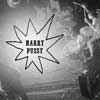 Miami's Harry Pussy combined the raw, undisciplined approach of old school punk rock, the atonal harshness of noise, and the micro-track lengths of classic grindcore into a muddy mess of distortion and chaos. An early precursor to the noise/rock vibe Wolf Eyes has been pushing, HP stayed more in the realms of dirty punk rock rather than the more electronic inspired work of the Michigan Boys, with the exception of the dirty analog synth of "MS20", which apes any noise band at their own game.
Miami's Harry Pussy combined the raw, undisciplined approach of old school punk rock, the atonal harshness of noise, and the micro-track lengths of classic grindcore into a muddy mess of distortion and chaos. An early precursor to the noise/rock vibe Wolf Eyes has been pushing, HP stayed more in the realms of dirty punk rock rather than the more electronic inspired work of the Michigan Boys, with the exception of the dirty analog synth of "MS20", which apes any noise band at their own game.
Most of the tracks here follow the same formula of sloppy rapid-fire drumming, improbably disjointed but somehow consistent guitar playing and shrieking vocals, all of which is slapped together in an overdriving, clippy mess of music. While bearing little direct physical resemblance to the genre's current form, the sound is pure punk, and beats that earlier vaginally named band Pussy Galore at their own game. While most stick to those short grindcore-esque blasts, there is some discernable differences among tracks: "Peace Of My Ass" is a track of pretentious spoken word over top a buried drum track that, thankfully, ends in laughter to indicate that it was not a half-assed Patti Smith attempt. "Mandolin" is one of the few tracks that cross the three-minute mark into high end cymbal racket and guitar attacks that are more noise than punk by far.
The disc is split approximately half and half from studio and live recordings, but the lo-fi recording quality as a whole makes the designation irrelevant. On the live tracks, the retention of the between-track dialogue from the original performances gives a great contrast to hear: Adris Hoyos' calm stage banter and announcements of the upcoming track couldn't be more far removed from the uvula ripping screams that immediately follow. The single tracked performance "Live at Salon Zwerge" in its entirety nicely summarizes the live material here, a clattering mess of feedback, drums and screams that mostly resembles an extended improvisation of "Mandolin" that, for all its length, doesn’t get tedious or dull.
One thing to be considered is that there’s a great deal of redundancy on here. Being mostly live recordings and rehearsal tracks, some songs appear in multiple forms. While it’s great to have such a sprawling collection of all of these tracks, I'm not sure if there really needs to be five different versions of "Smash The Mirror" and four takes of "Chuck!" Hardcore HP fans will be glad to have each and everyone of these takes, but the more casual fan will probably be happy to just skip around and dabble here and there. Listening to in a single sitting might be a bit ennui inducing, but reproducing the tracklists of the original vinyls or playing passages here and there will more than satisfy the need for a scum rock enema.
samples:
Read More
- Administrator
- Albums and Singles
 Rather than simply drawing elements from 20th century synthesizer music, Reinhardt instead recreates it with a sense of modernity and development that is not simply a nostalgic collection of tracks, but a disc that fully reproduces the sound and sensation of the avant garde pieces, soundtracks, and pop songs that classic analog synthesizers ended up pushing their way into.
Rather than simply drawing elements from 20th century synthesizer music, Reinhardt instead recreates it with a sense of modernity and development that is not simply a nostalgic collection of tracks, but a disc that fully reproduces the sound and sensation of the avant garde pieces, soundtracks, and pop songs that classic analog synthesizers ended up pushing their way into.
In a way, this album represents a microcosmic study of synthesizer music from the past 18 or so years, because it features elements from so many genres, but still makes a cohesive set of songs that feels like a fully realized work. Some of the tracks like "Lyre of David" and "Blue Cutaway/Tore Earth Clinker" draw heavily on film scores and soundtracks of the 1970s and '80s. The beatless pieces and thick, dramatic synths call to mind the work of Vangelis (especially Blade Runner), Wendy Carlos Williams, and Carmine Coppola’s Apocalypse Now score. Obviously analog synths, they reproduce the sound of strings and brass as best as the technology could, but never lose that distinct synthetic quality.
Other pieces like "Every Terminal Evening" and "An Upright Fortune" integrate rudimentary drum machines into the mix which are closer to the spheres of synthpop than the other pieces, but still not quite The Human League or Depeche Mode. The former's highly sequenced bass synth and drum pattern feels like an antecedent of some of Throbbing Gristle's poppier material, but rather than the dark and subversive nature of their work, Reinhardt's is lighter and more atmospheric. The latter is more conventional in its rhythms, the deep bassy synths giving an almost danceable vibe.
There are some moments that integrate elements of current electronic music that bears little direct resemblance, but still has some of the same ingrediants. The constant kick drum thump rhythms of "Fast Blot Declining" and the beeps and proto-303 sawtooth synth leads of "Tentshow" have all of the makings of electro-influenced techno music, but instead remains dramatic and atmospheric rather than danceable. Even in "Lord Sleep Monmouth," the slow arpeggiated synths and swirling leads lean towards prog rock, but stays more open and spacious, rather relying on that genre's focus on the overly dense or complex.
The more "out there" tracks such as "Tandem Suns" and "Crept Idea For Mom" are more along the lines of the avant garde electronic music of the 1960s and 70s, the former is slower and propelled by a filtered drum machine and a greater sense of tension than the other more airy works, and is further altered by a noisier, grimier synth line at the end. "Crept Idea For Mom" is more rhythmic and less lush than the others on the album, full of odd sci-fi textures and effects and treatments that make it somewhat more esoteric than the other pieces.
While it bounces from genre to genre, the pieces are all self-contained, but strung together with a sense of atmosphere and mood that is the audio equivalent of a collection of short stories. While each differs and goes in their own direction, the overall feeling is a consistent and captivating work that shows the depth and variety of a now-dated technology that never lost its specific color or tone.
samples:
Read More
- Administrator
- Albums and Singles
 Richter displays a hitherto unsuspected sense of humor in composing music for ring tones. This is an intriguing concept, with an apt title and short pieces that prove surprisingly wide ranging and affecting. The only flaw is that if my phone sounded this good I would be loath to interrupt any of these tracks to answer it.
Richter displays a hitherto unsuspected sense of humor in composing music for ring tones. This is an intriguing concept, with an apt title and short pieces that prove surprisingly wide ranging and affecting. The only flaw is that if my phone sounded this good I would be loath to interrupt any of these tracks to answer it.
Max Richter's The Blue Notebooks was arguably one of the touchstones of recent modern classical composition. He incorporated Tilda Swinton reading from the writing of Franz Kafka and Czeslaw Milosz into some of the tracks. Scant use of the sound of a typewriter and her oblique narration lent a human quality to pieces which, for all their melancholic beauty, might otherwise have seemed emotionally impenetrable. A similar approach informed Songs From Before where Richter achieved lower notes resembling sonic depth charges which contrasted with pieces that featured Robert Wyatt reading the words of Haruki Murakami.
Not everyone finds Max Richter enough of a challenge. The pristine sound and aching melodies leave his work open to accusations of superficiality. Such a view fails to acknowledge the admirable economy and euphoric resonance of his albums as well as their undoubted mystery. That said, it was probably time for a change and he has embraced that challenge without abandoning his core methodology. The readings are gone and except for a few tracks such as "In Louisville At 7" which playfully incorporate human chatter, there are no passages for voice. What remains are piano, strings, found sound and electronics as 24 Postcards in Full Colour uses the instruments themselves to underline Richter's mischievous desire for exploring communication and setting puzzles. With hindsight this motivation now seems evident in the earlier albums, too.
MP3s sound worse than CDs which sound worse than vinyl. So goes a popular mantra amongst people of a certain age or listening experience. I would have put Richer down as a subscriber to that view. Here though, short of tackling the problem of musical birthday cards, he goes for the jugular of the next most annoying sound currently in existence. In the process he demonstrates that ring tones don’t have to be pitiful and annoying. It's not quite the musical equivalent of, say, I.M. Pei or David Bailey designing fast food containers, but you get the picture. "A Song For H/Far Away" weaves guitar, strings, radio broadcasts, bells, and goodness knows what else into a mesmeric elegiac piece. Several piano or string dominated tracks are ideal for staring into the middle distance and imagining that the breakfast of toast and marmalade you are making is of mystical significance. Other pieces, such as "Cascade NW by W" and "Tokyo Riddle Song" are perhaps the most likely ring tones in that they are more sprightly, repetitive, and bouncy.
In the past Max Richter has assisted Future Sound of London, Roni Size and Vashti Bunyan. He has worked on Ari Folman’s animated documentary Waltz With Bashir and excerpts from The Blue Notebooks were used in the film Stranger Than Fiction. Richter begins to emerge as lacking snobbery and being as unafraid of fun as he is of intellect and commerce. That said, his creations will probably always fall on the side of restraint and good taste. The theory behind the title is that postcards used to (and to a lesser extent still do) bring messages from elsewhere. Similarly, when the phone rings it is to herald the arrival of a similar missive in a different form. Plans to incorporate audience member's cell phones into performances may already have occurred. Richter's first solo record Memory House has also just been reissued.
samples
Read More
- Administrator
- Albums and Singles
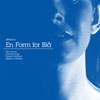 With mainstay Vincent De Roguin absent and Stephen O'Malley exercising sharp restraint, Æthenor have released their best album and maybe one of the best live recordings I have ever heard. Assembled from three shows recorded in Oslo, Norway during 2010, En Form For Blå captures Æthenor improvising a loose electric sound bound expertly together by the talents of percussionist Steve Noble and one-half of the Ulver crew. Together they create a surprisingly intelligible sound, which betrays its impromptu origin.
With mainstay Vincent De Roguin absent and Stephen O'Malley exercising sharp restraint, Æthenor have released their best album and maybe one of the best live recordings I have ever heard. Assembled from three shows recorded in Oslo, Norway during 2010, En Form For Blå captures Æthenor improvising a loose electric sound bound expertly together by the talents of percussionist Steve Noble and one-half of the Ulver crew. Together they create a surprisingly intelligible sound, which betrays its impromptu origin.
At first, I understood why VHF advertised En Form For Blå as a kind of jazz mutant. With Derek Bailey collaborator Steve Noble playing drums and the duo of Daniel O'Sullivan and Kristoffer Rygg producing atonal melodies using, among other things, a Fender Rhodes piano, records like Get Up With It were destined to be used as a point of reference. It is immediately evident, however, that Æthenor are not a jazz quartet and that they aren't making anything like jazz music. Their sound on En Form For Blå is almost totally unique, coming closer to a Pan•American/Music is Rotted One Note/Charalambides hybrid than Miles Davis or Herbie Hancock. Thanks to their fluid style, creative open-mindedness, and a nice editing job—there is no crowd noise—Æthenor make this improvised live recording sound like a studio album. In fact, it wouldn't be hard to mistake it for a soundtrack, film score and effects included.
O'Sullivan and Rygg provide the bulk of En Form's weight. They alternate between trembling bass swells, noise walls, and lighter-than-air melodies, but typically use some combination of each to generate microscopic interchanges and hallucinatory field recordings. If their instruments aren't squawking or breathing, they're rummaging, flinching, or even slithering around in an environment rife with minutiae. There are a few massive crescendos dotting the record, but in general they avoid the chaos of wall-to-wall noise and focus their efforts on lucid instrumental exchanges. Synthetic vamps, which sometimes creep into Pink Floyd territory, frequently anchor the proceedings and serve to concoct a thoroughly ritualistic tone, which is spacious enough to include silence and pianissimo dynamics.
On more than one occasion, however, Daniel and Kristoffer's disconnected scribblings congeal into a groove, the same way clouds unexpectedly transform into recognizable figures. For instance, during "One Number of Destiny in Ninety Nine," Æthenor spontaneously sculpt an Om-like dirge from a sea of squirming effects and churning distortion, turning a storm of noise into a swaying and exotic dance.
It was during such passages that I first noticed Noble's drum performances. Among the resonant synthetic tones and apocalyptic horn blasts, Noble carves out a whole world of scampering percussive noises and bellicose rhythms. Initially, his cunning approach to the drums sounds supplemental, but on song after song it is evident that his talents are essential to the record's success. In many cases, his imitative cadences take center stage, with O'Malley, Rygg, and O'Sullivan playing the supplemental role. The importance of his contributions cannot be overstated; without his enterprising approach, En Form For Blå would be a much less exciting, much flatter recording.
Without a doubt, Noble's work is the star of this show, but the restraint and collaborative ability that Stephen, Daniel, and Kristoffer demonstrate is equally essential. I would love to see this incarnation of Æthenor in concert for myself because I find it hard to believe a record as coherent as En Form For Blå could be the product of a live engagement. If all of their live performances are of as high a quality as this album suggests, then Æthenor has to be counted as one of the best live bands around.
samples:
 
Read More
- Administrator
- Albums and Singles
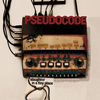 Although they appeared on a variety of compilations in the early 1980s, including the legendary Rising from the Red Sands, Pseudocode mostly remained unknown, putting out their own cassettes and the occasional odd 7", but never reaching the same levels of notoriety that contemporaries in the early industrial underground enjoyed. Nearly 30 years later, some of these earliest recordings have been issued, for the first time, in a deluxe double LP package.
Although they appeared on a variety of compilations in the early 1980s, including the legendary Rising from the Red Sands, Pseudocode mostly remained unknown, putting out their own cassettes and the occasional odd 7", but never reaching the same levels of notoriety that contemporaries in the early industrial underground enjoyed. Nearly 30 years later, some of these earliest recordings have been issued, for the first time, in a deluxe double LP package.
This Belgian trio, consisting of Xavier S (Thrills) on vocals, Alain Neffe (Insane Music) on synths and horns, and Sub Rosa co-founder Guy Marc Hinant on guitars were essentially caught up in the post-punk and early industrial movements that were ongoing when these tracks were recorded between 1980 and 1982, with only a few being released on compilations in edited forms.The full package feels like a pristine copy of a C90 uncovered by one of the band members, and presented beautifully to a world finally ready to hear it.
Pseudocode definitely had their own sound and style, but there are influences to be heard.The guitar noise and atonal vocals of "Growing Down" would have fit in on the first DAF album, even if the monotone drum machine pound wouldn't, and the filtered rhythms and synth stabs of "Cut Up" resemble Throbbing Gristle, even more so considering Xavier's sounds quite a bit like Genesis P-Orridge via the echo chambered vocals.
Given their source, it is not shocking that there’s a few tracks that meander a bit longer than they should.The cheap synths and random drum machine rhythms on "You're Not Alone" bounce around for most of the song without going anywhere until the final moments, when it locks into a more aggressive, pounding sound that ends too quickly."Flesh Shop" has the same feeling, with the skittering and delayed rhythms propelling a track, that feels like it could use some editing, but throws in everything but the kitchen sink, sonically.Well, not the kitchen sink, but it sounds like someone left The Cure's Seventeen Seconds playing on a tape deck somewhere in the studio.
The strongest songs are where the band seems to click together in their improvisations:the trashcan drums, dubby bass, and sax on "I Don't Say More" put a perverse skronk into the otherwise un-funky collection."Sad Song" has metronomic snare rhythms that belie the more complex pianet melodies and analog synths, pushing the song more into an early electro pop realm."Fight Back (The Angels)" has a combination of filtered guitar, chintzy beats, and robotic vocals that also seem to straddle that line between intentionally abrasive industrial noise and early stabs at synth pop, which reminded me of some of those early Cabaret Voltaire experiments.
While I don't think Pseudocode will be spoken of with the same hushed reverence we have for the likes of Throbbing Gristle or Suicide, there are a lot of rough gems here that are just fine without any polish.Rather than mimicking their influences, this trio clearly integrated them, but had their own thing going on.It might not be a revelatory lost classic of proto-industrial music, but it's still a fun album. Plans for future releases of unreleased works is in the pipeline.
samples:
 
Read More


